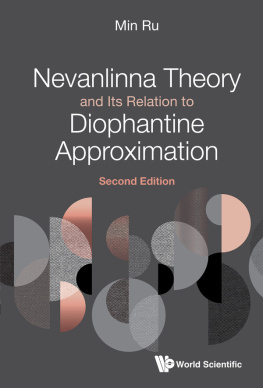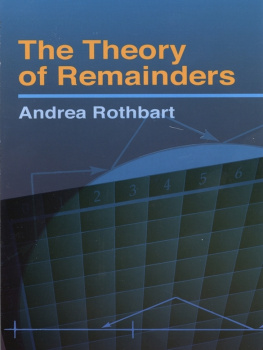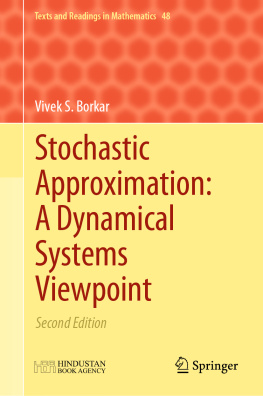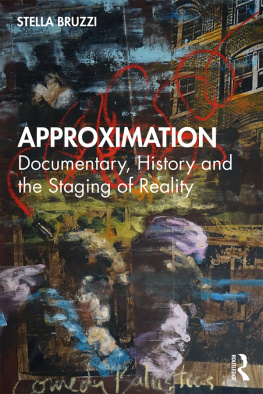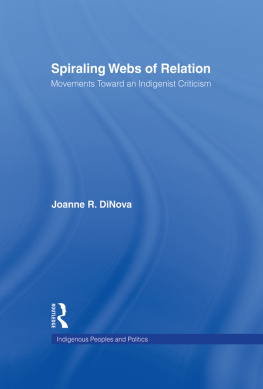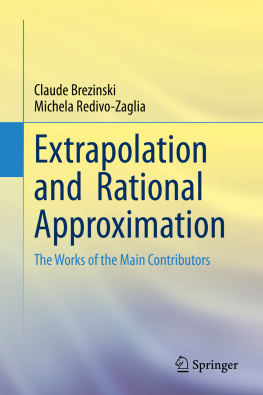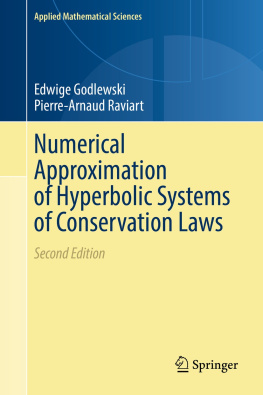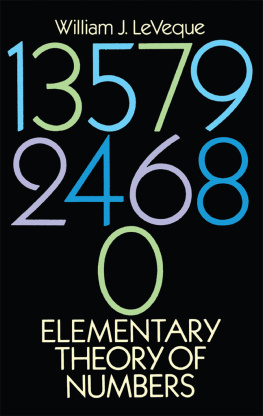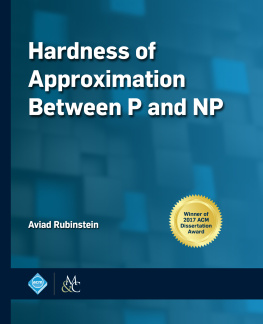Contents


Published by
World Scientific Publishing Co. Pte. Ltd.
5 Toh Tuck Link, Singapore 596224
USA office:27 Warren Street, Suite 401-402, Hackensack, NJ 07601
UK office:57 Shelton Street, Covent Garden, London WC2H 9HE
Library of Congress Control Number: 2021007603
British Library Cataloguing-in-Publication Data
A catalogue record for this book is available from the British Library.
NEVANLINNA THEORY AND ITS RELATION TO DIOPHANTINE APPROXIMATION
Second Edition
Copyright 2021 by World Scientific Publishing Co. Pte. Ltd.
All rights reserved. This book, or parts thereof, may not be reproduced in any form or by any means, electronic or mechanical, including photocopying, recording or any information storage and retrieval system now known or to be invented, without written permission from the publisher.
For photocopying of material in this volume, please pay a copying fee through the Copyright Clearance Center, Inc., 222 Rosewood Drive, Danvers, MA 01923, USA. In this case permission to photocopy is not required from the publisher.
ISBN 978-981-123-350-0 (hardcover)
ISBN 978-981-123-351-7 (ebook for institutions)
ISBN 978-981-123-352-4 (ebook for individuals)
For any available supplementary material, please visit
https://www.worldscientific.com/worldscibooks/10.1142/12188#t=suppl
Printed in Singapore
Dedicated to my wife Yu Shen, my son Aaron and my daughter Christina
Preface
Preface to the First Edition
Diophantine equations are systems of polynomial equations to be solved in integers, in rational numbers, or in various generalizations, such as finitely generated rings over Zor finitely generated fields over Q. Diophantine approximation is the study of Diophantine equations using the method of approximations. The Nevanlinna theory, on the other hand, studies holomorphic solutions of the systems of polynomial equations. More precisely, since the complex solutions to a system of polynomial equations form an algebraic variety, Diophantine approximation studies the rational points in algebraic varieties defined over Qand Nevanlinna theory investigates the properties of holomorphic curves in algebraic varieties. Nevanlinna theory and Diophantine approximation have developed independently of one another for several decades. It has been, however, discovered by C.F. Osgood, P. Vojta, Serge Lang and others that a number of striking similarities exist between these two subjects. Generally speaking, a non-constant holomorphic curve in an algebraic variety corresponds to an infinite set of rational points, so, in this way, any theorem in Nevanlinna theory should translate into a true statement in Diophantine approximation. A growing understanding of these connections over the last 15 years has led to significant advances in both fields. Outstanding conjectures from decades ago are being solved.
This book presents, in a systematic and almost self-contained way, the analogy between the Nevanlinna theory and Diophantine approximation. Although the emphasis is on Nevanlinna theory, both theories are presented in this book, including some results of recent research. We divide each chapter into Part A and Part B. Part A deals with Nevanlinna theory and Part B covers Diophantine approximation. At the end of each chapter, a table is provided to indicate the correspondence of the theorems.
Let us first review the historical development of Nevanlinna theory. Nevanlinna theory begins with the study of the distribution of values of meromorphic functions. In 1929, R. Nevanlinna extended the classical little Picards theorem by proving the two elegant theorems (we call them the Firstand the Second Main Theorem). The work of Nevanlinna evoked a very strong interest of research in his theory. Right after Nevanlinna, a number of important papers by researchers such as Bloch [Bloch (1926)], Cartan [Cartan (1928)], [Cartan (1933)], and Weyls [Weyl and Weyl (1943)] were published. Cartan extended Nevanlinnas result to holomorphic curves in projective spaces and Bloch considered holomorphic curves in Abelian varieties.

